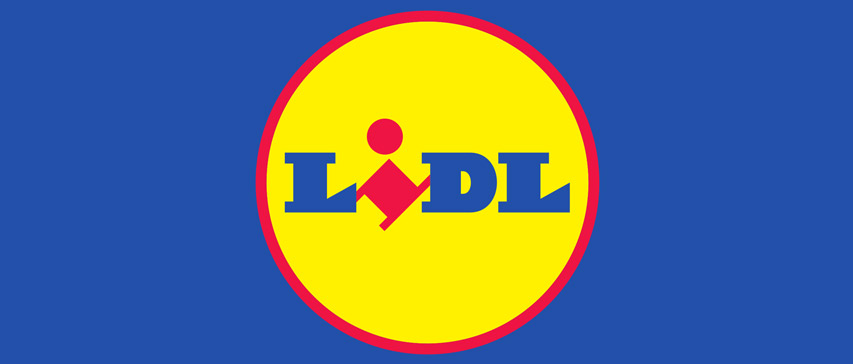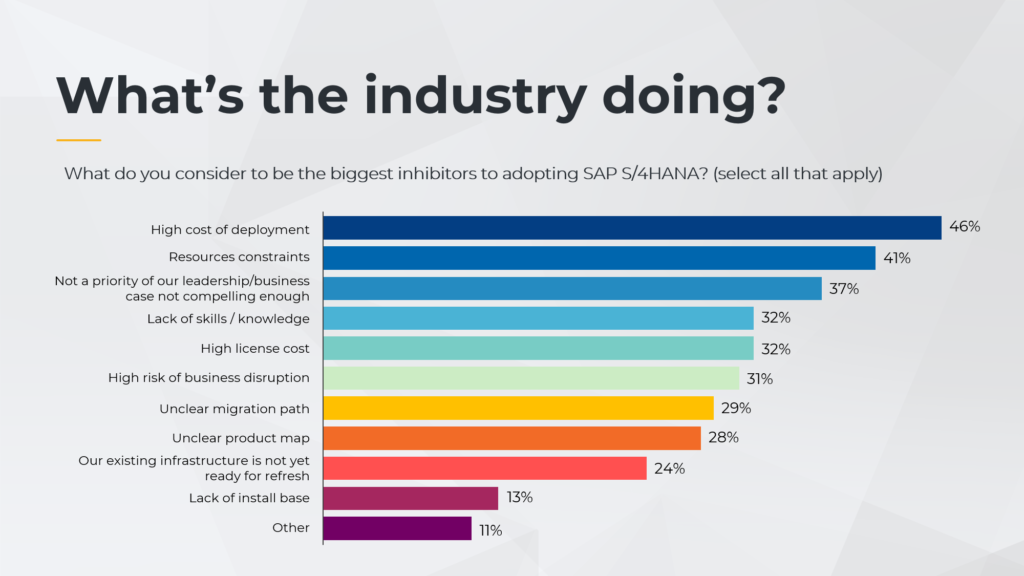In times of globalization, companies are constantly looking for different tools that will help them gain operational efficiency and enhance their financial performance . Most companies choose to achieve this through a digital transformation. This journey of aligning business processes with a suitable technological setup although can be quite a daunting process, has its rewards.
It is no doubt, a huge investment on the part of the company and a large part of the decision is to evaluate which ERP system will be an appropriate fit for your business and which consulting firm will be your perfect implementation partner.
One of the most talked-about ERP systems out in the market today is SAP’s S/4 HANA. And the reason for that is SAP’s unpopular decision requiring its customers to migrate to S/4 HANA by 2027, which puts them in quite a predicament. Although SAP calls S/4 HANA their ‘future-ready, intelligent ERP software’, the migration means complete re-implementation where customers will lose all their customization on SAP ECC and will have to redo all of them in the S/4HANA environment.
Implementation of the S/4 HANA is an overwhelming process and many-a-times it has failed miserably, some even ending in multi-million dollar lawsuits. Today, we will be looking at the top 5 monumental S/4 HANA failures that will definitely go down in history as epic ERP implementation failures of all times.
Revlon’s S/4 HANA Failure

Revlon implemented S/4 HANA in their largest plant in South Carolina before implementing it in the other smaller plants across the world. The project ran into severe delays because of which they were unable to fulfill the US federal, state, and local financial reporting deadlines.
Additionally, customer orders did not come through because of which the company suffered huge losses in sales, which they were eventually unable to recover. Revlon had to incur huge bills in expedited shipping fees to fulfill customer order backlog. Customer service levels were inevitably disrupted and they were unable to process payments to vendors. All this led to a 7% drop in Revlon’s stocks and culminated in investor lawsuits against Revlon. Thus, rightfully placing Revlon in the “Top S/4 HANA Failures” list.
S/4 HANA implementations are a long drawn, daunting exercise. And one of the key reasons for the failure of this project was that risks should have been carefully documented, planned, quantified, understood, and finally mitigated. At VIENNA Advantage, we spend an inordinate amount of time understanding our customer’s requirement and then coming up with a detailed blueprint document which all concerned parties need to thoroughly understand and sign off. Effective risk mitigation is crucial in the process of digital transformation!
Haribo’s S/4 HANA Failure

In 2019, Haribo, the European company especially known for making gummy bears moved to the SAP S/4 HANA system. The company pulled the plug on this implementation when it suffered huge losses due to a completely disrupted Supply Chain (SCM).
Once again, the blueprint of the digital transformation was unclear and enough time was not spent understanding business requirements and aligning technology according to it. When technology starts driving the business, you often lose sight of the purpose why the digital transformation was necessary in the first place. Operational disruptions are a part of every digital transformation process. Initial disruptions are normal, however, when operations come to a screeching halt, as it did with Haribo, that is a huge red flag.
Another big reason why Haribo is placed in the “Top S/4 HANA Failures” list was the lack of proper testing. Testing is an integral part of the implementation process. This is why at VIENNA Advantage, we follow a meticulous testing process, which we call User Accepted Testing (UAT). Users come up with their own cases based on the signed-off blueprint and then test the system accordingly. The lack of these key processes was the reason for the SAP S/4 HANA failure at Haribo. The main reason for these lapses is the lack of executive governance and leadership.
When you’re going through a digital transformation, the responsibility of the project’s success lies with the Executive team. They need to be driving the process and make sure they bring in the right consulting partner for this project and drive through each process of the implementation diligently.
LeasePlan’s S/4 HANA Failure

In 2019, LeasePlan, a Dutch fleet management company terminated their SAP S/4 HANA implementation. One of the main reasons for this failed implementation was the misalignment of the digital strategy with the corporate strategy.
The company operates out of multiple locations globally. Previously, its digital setup followed 35 different industry-specific systems. Consolidating all these 35 different systems under the single, broad, and monolithic SAP S/4 HANA system in itself was a massive operational and managerial challenge. Interestingly, the company timed a major reorganization of its business model during the implementation process. They were simultaneously rolling out new business strategies which would give them a competitive edge.
S/4 HANA does not align well with such disruptive business models. In addition to this, the company decided to go with a big bang approach to their digital transformation process across different locations rather than a phased approach. LeasePlan has rightfully gain its place in the “Top S/4 HANA Failures” list because, at the end, the company had to write-off €100mn due to this implementation failure. Yet another reason behind LeasePlan’s S/4 HANA failure was an inadequate change management plan. The people issues involved with digital transformation were not appropriately addressed.
Training of the end-users is an integral part of the process. The inability to do so runs the risk in the workforce rejecting the new system and leads to the digital transformation losing purpose. At VIENNA Advantage, for example, we realize the importance of proper training and our consultants devote a considerable amount of time training the key users of the system and its administrators as well.
Explore the benefits of homogeneous ERP Landscape across all subsidiaries and learn how a unified enterprise IT core can become a reality with VIENNA Advantage Enterprise Cloud ERP solution.

Lidl’s S/4 HANA Failure

Lidl, the German grocery retailer, returned to their legacy inventory management system after their SAP S/4 HANA implementation failure. The company had invested €500mn and 7 whole years in trying to implement the system. This system integration failure was largely due to the S/4 HANA’s inability to align with Lidl’s business processes and vision. For example, Lidl sorts their inventory management based on the purchase price, whereas S/4 HANA would sort by the retail price. In spite of many efforts to customize, S/4 HANA was unable to fit in. The Lidl executives also placed blind faith in their system integrators and delegated the entire digital transformation process to them which compounded the problem. In addition, there was a major executive reorganization within the company while the implementation was going on. This only added to the ownership issues of the implementation. Because of all this reasons, Lidl found it’s place in the “Top S/4 HANA Failures” list.
National Grid

National Grid’s SAP implementation failure is what books are made of. This is not S/4 HANA but rather a SAP failure story and it’s worth mentioning. It was a disaster that ended in several lawsuits and where Wipro had to pay $75mn in settlement fees alone. National Grid accused Wipro of poor quality of consultants which led to flawed mappings and severe design defects. The company ran into major audit issues. They missed the financial reporting deadlines since they were unable to get their hands on their numbers on time.
Within weeks of go-live, the SAP system was unable to process payments to vendors and the payroll system was riddled with defects. Some employees got paid much more while others didn’t get paid at all. This was so flawed it cost the company $8mn in an overpayment to the National Grid Union workforce. This was a loss that the company finally had to absorb. Supply Chain and Procurement was also left in shambles after the SAP implementation. The company eventually had to set up a ‘cash reconciliation team’ to tackle the encashment disaster. The team had to contact banks to understand which checks had been cashed and which had not. In this, the company had to write-off approx. $3mn in 40,000 checks that were either cashed or voided in error.
S/4 HANA Failures: Lessons Learned
Each of these S/4 HANA failures teach us a few things about what not to do during a digital transformation process.
- Choose your implementation partner wisely – Make sure your system integrators are industry experts, and in complete understanding of your business requirements, and are equipped to manage and customize your digital transformation in alignment with your corporate strategy.
- Ensure Executive Alignment and Ownership – It is imperative the executive team does not lose sight of why the digital transformation process is necessary for your company. Delegating the entire project to the system integrators spells out imminent doom. Executive Ownership is key for a successful digital transformation.
- Have a comprehensive Change Management Plan – It is very important to prepare and train your employees before and during the implementation for them to accept the changes and make the transition. This directly impacts the success of the project.
- Align Technology with Corporate Strategy – Business Process Management must be worked out clearly. Business should drive technology, not the other way round.
- Invest enough time in proper testing – Testing is an imperative step in the implementation process. It resolves issues in business processes, brings clarity to roles and responsibilities and ensures proper integration with third party devices.
9 out of 10 existing SAP customers wouldn’t move to S/4 HANA
According to one Nucleus Research, which focused on analyzing the experience of SAP customers, 6 out of 10 existing customers wouldn’t buy the same solution from SAP again. When asked if they would consider a future solution, those same respondents indicated they would not consider SAP’s future offerings.
Even more interesting fact from the same research is that 9 out of 10 customers indicated they would not consider a future investment in S/4HANA and appear to be following a slow tapering-off strategy as they evaluate other opportunities in the market.

So, what are your choices before the 2027 deadline?
Even though 2027 seems quite some time away, it is recommended to start preparing now. Smaller businesses may be able to wait a year or two, but larger enterprises and multinational corporations need to act now. Depending on your company size, the current SAP setup and the level of customization you have 3 choices: migrate gradually (Brownfield Migration), re-implement (Greenfield Migration), or migrate away.
Re-implement (Greenfield Migration)
Key points that you should take in consideration when evaluating the Greenfield Migration approach:
- Not all standard features are available in S/4HANA yet
- No migration path for customization
- Complete and expensive re-implementation
Migrate Gradually (Brownfield)
Key points that you should take in consideration when evaluating the Brownfield Migration approach:
- Migrate to S/4 HANA database and gradually migrate modules to S/4 HANA
- No migration path for customization
- Complete and expensive re-implementation
Migrate Away
- Re-implement to a different solution
- No migration path for customization. Complete re-implementation
- Economical options available ⚠️
All options require similar effort and time… so is it still worth sticking with SAP?
SAP customers are right to feel angry because they are pressured into giving up their existing ERP system and move on to another, just because SAP can use this to grow its business. Although S/4 HANA may offer some advantages to its users, it should be the customer’s choice whether to move, after evaluating those advantages against the disruption. Across its product portfolio, SAP has a lot of work to do to convince customers that their future will truly be better and simpler with SAP.
In the meanwhile, more and more large corporations are exploring enterprise level open source ERP solutions as an alternative to the proprietary ones. The industry leader VIENNA Advantage Enterprise Cloud ERP has a proven track of successfully SAP replacements.




